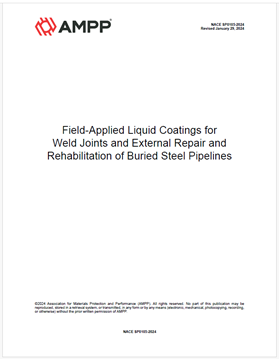Search
Products tagged with 'sp0169'
View as
Sort by
Display
per page
Benchmarking International Cathodic Protection and Alternating Current Mitigation Standards to Determine Suitable Protection Criteria
Product Number:
MECC23-20206-SG
Publication Date:
2023
$20.00
NACE SP0105-2024, Field-Applied Liquid Coatings for Weld Joints and External Repair and Rehabilitation of Buried Steel Pipelines
Product Number:
NACE SP0105-2024
Publication Date:
2024
$109.00
NACE SP0375-2024, Field-Applied Underground Wax Coating Systems for Underground Metallic Pipes: Application, Performance, and Quality Control
Product Number:
NACE SP0375-2024
Publication Date:
2024
$109.00
SP0303-2020 (formerly RP0303), “Field-Applied, Heat-Shrinkable-Sleeve Coating System for Pipelines: Application, Performance, and Quality Control”
Product Number:
SP0303-2020
ISBN:
1-57590-177-3
Publication Date:
2020
$109.00





